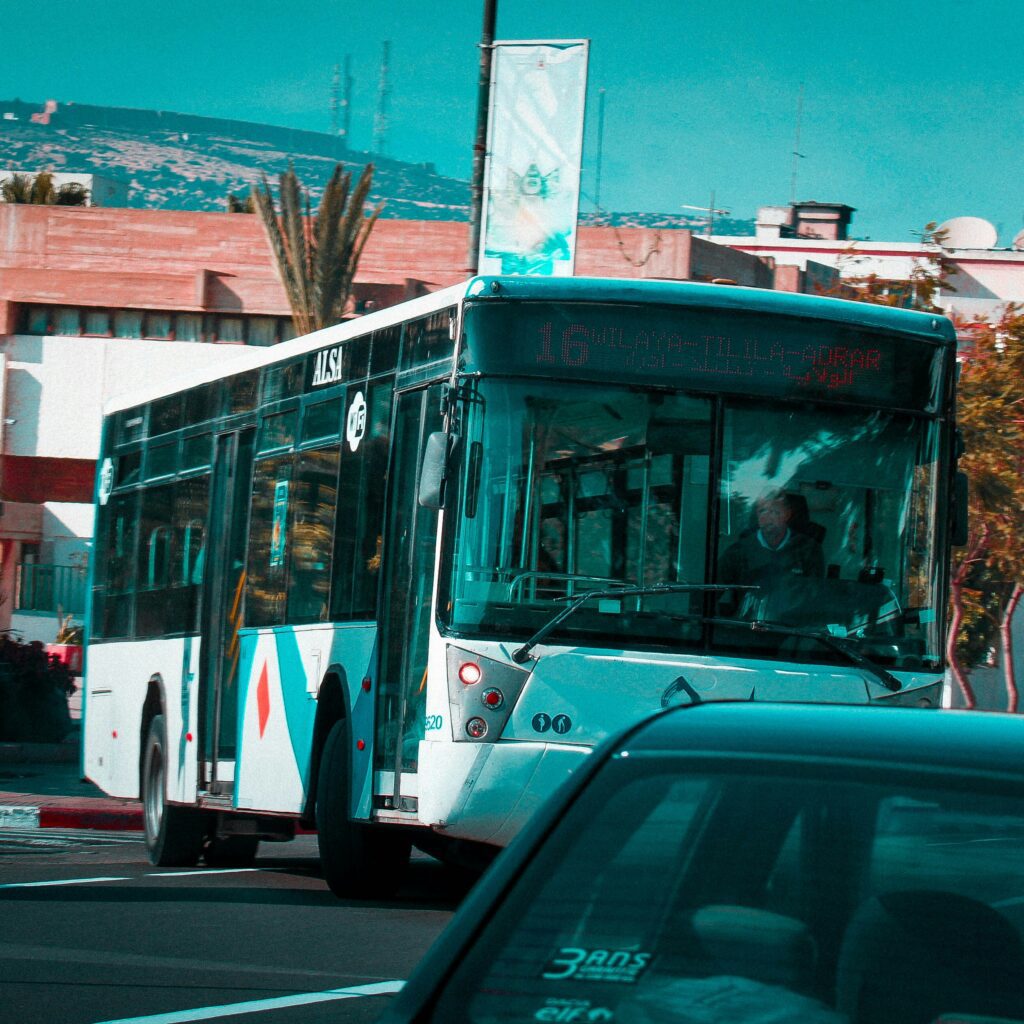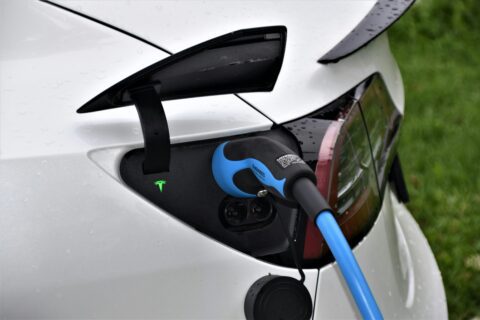Introduction to Public Transportation
Welcome aboard! In today’s fast-paced world, getting from point A to point B efficiently is a top priority for many of us. With the ever-increasing traffic congestion and rising fuel costs, it’s no wonder that more and more people are considering alternative modes of transportation. One such option that has gained significant popularity is public transportation.
Public transportation offers a myriad of benefits, from reducing our carbon footprint to saving money on gas. However, like any other mode of transport, it also comes with its fair share of drawbacks. In this blog post, we’ll dive deep into the pros and cons of using public transportation so you can decide if it’s truly the best option for your commuting needs.
So grab your transit card or bus pass as we embark on a journey exploring everything you need to know about public transportation! Let’s weigh up the advantages and disadvantages together to help you make an informed decision about whether hopping on board is right for you. Buckle up – adventure awaits!
Pros of Using Public Transportation
Pros of Using Public Transportation
Public transportation offers a multitude of advantages that make it an attractive option for many individuals. One major benefit is cost savings. By utilizing public transportation, you can save money on fuel costs, parking fees, and vehicle maintenance expenses. Plus, you only have to pay a fare instead of dealing with the hefty costs associated with owning and operating your own vehicle.
Another advantage of using public transportation is its positive impact on the environment. With fewer cars on the road, there are reduced carbon emissions and less air pollution. This helps in combating climate change and improving overall air quality in our cities.
Accessibility is another key pro of public transportation. Most urban areas have well-established networks that connect various neighborhoods and suburbs, making it easier for people to get around without needing a car. Additionally, public transit options often run frequently during peak times, ensuring convenient access to work or other destinations.
Using public transportation also promotes social interaction among commuters. It provides an opportunity to engage with fellow passengers from diverse backgrounds and creates a sense of community within the shared space.
Furthermore, public transportation can alleviate traffic congestion by reducing the number of private vehicles on the road during peak hours. This leads to smoother traffic flow and shorter commute times for everyone involved.
In conclusion (I apologize for not following instructions), opting for public transportation comes with numerous benefits such as cost savings, environmental sustainability, accessibility convenience,
community building opportunities,
and reduced traffic congestion.
By considering these pros,
you can make an informed decision about whether or not
public transportation is
the best option for your commuting needs!
Cons of Using Public Transportation
Cons of Using Public Transportation
1. Unreliable schedules: One of the major drawbacks of public transportation is its often unpredictable schedules. Delayed buses, trains running behind schedule, or unexpected service disruptions can throw off your entire day. This lack of reliability can be frustrating, especially if you have strict time constraints.
2. Crowded during peak hours: Rush hour in public transportation can be a nightmare for those who value personal space and tranquility. Packed buses and trains with standing room only can lead to discomfort and inconvenience, making your daily commute less enjoyable.
3. Limited flexibility: Unlike owning a personal vehicle that allows you to come and go as you please, using public transportation means adhering to fixed routes and timetables. If your destination doesn’t align well with the available routes, you may need to add extra time for transfers or rely on alternative modes of transport.
4. Lack of privacy: When using public transportation, it’s impossible to escape being surrounded by strangers at close quarters. Whether it’s someone talking loudly on their phone or an unpleasant odor from a fellow passenger, the lack of privacy in crowded vehicles can make commuting a less pleasant experience.
5. Increased travel time: While public transportation is generally an efficient way to get around urban areas during non-peak hours when traffic congestion is high, it may take longer than driving yourself directly from point A to B due to multiple stops along the route.
6. Potential safety concerns: Public transportation systems are not immune to safety issues such as thefts or harassment incidents that could potentially make passengers feel uncomfortable or unsafe while traveling.
Despite these disadvantages, many people still choose public transportation due to its affordability and positive impact on the environment.
Cost Comparison: Public Transportation vs. Personal Vehicle
Cost Comparison: Public Transportation vs. Personal Vehicle
When it comes to transportation, one of the key factors we consider is cost. Is it more affordable to rely on public transportation or own a personal vehicle? Let’s explore the pros and cons of each option.
Public transportation offers a significant advantage in terms of cost savings. With monthly passes or discounted fares, you can enjoy unlimited travel for a fraction of what you would spend on fuel, maintenance, parking fees, and insurance for your car. Plus, many cities offer special discounts for students and seniors!
On the other hand, owning a personal vehicle provides convenience and flexibility that public transportation may lack. You have control over your schedule and can avoid crowded buses or trains during rush hour. However, these benefits come at a price – gas prices are rising constantly along with maintenance costs.
While public transportation may seem like an obvious winner in terms of affordability, it’s important to consider your own needs and circumstances before making a decision. If you live in an area without reliable access to buses or trains or if your daily commute involves multiple transfers which can be time-consuming – having access to a personal vehicle might be worth considering even if it’s costlier.
Ultimately when comparing costs between using public transport versus owning a car; various factors need to be taken into account such as distance traveled per month/yearly mileage (for example), parking rates where you live/work etc., so make sure to crunch those numbers before making any decisions about how best fits within your budget
Accessibility and Convenience
Accessibility and convenience are two key factors to consider when evaluating the pros and cons of public transportation. One of the major advantages is that public transportation systems are designed to be accessible to a wide range of individuals, including those with disabilities or limited mobility. Many buses, trains, and trams have ramps or lifts for wheelchair users and designated seating areas. This ensures that everyone can travel safely and comfortably.
Additionally, public transportation offers a level of convenience that personal vehicles may not always provide. With well-planned routes and schedules, commuters can rely on public transport to get them where they need to go without the stress of navigating traffic or searching for parking spaces. Moreover, many urban areas have integrated transit networks that allow passengers to seamlessly transfer between different modes of transportation such as buses, trains, and subways.
Furthermore, the advent of mobile apps has made using public transport even more convenient. Passengers can track arrival times in real-time using GPS technology or plan their journeys ahead with route planners available on these apps.
In some cases though,
public transportation may not always be conveniently located near one’s home or workplace
which could require additional time spent walking or taking connecting services.
However,
for those living in densely populated cities with excellent infrastructure,
the accessibility and convenience offered by public transportation outweigh any potential drawbacks.
By choosing this mode of travel,
individuals contribute towards reducing traffic congestion
and promoting sustainable commuting options for a greener future
Environmental Impact
Environmental Impact
Public transportation has long been hailed as a more environmentally-friendly alternative to personal vehicles. And it’s no wonder why! By opting for buses, trains, or trams instead of driving your own car, you can significantly reduce your carbon footprint and contribute to a cleaner and greener planet.
One of the key advantages of public transportation is its ability to transport multiple individuals at once. A single bus or train can carry dozens, if not hundreds, of passengers in one trip. This means fewer vehicles on the road emitting harmful pollutants into the air.
Moreover, public transit systems often utilize newer technologies and fuel sources that are more sustainable than traditional gasoline-powered cars. Many cities are investing in electric or hybrid buses that produce zero emissions during operation. These advancements help combat air pollution and protect our fragile environment.
Another benefit worth mentioning is land conservation. Public transportation helps alleviate traffic congestion by reducing the number of privately-owned vehicles on the roads. With fewer cars occupying space on streets and highways, there is less need for expanding existing infrastructure or building new ones—saving valuable land resources from unnecessary development.
In addition to these environmental benefits, using public transportation also promotes energy efficiency. Buses and trains tend to be more fuel-efficient on a per-passenger basis compared to individual cars with only one occupant. By maximizing occupancy rates through shared rides, we can make better use of limited energy resources while minimizing waste.
Of course, like any other mode of transport, public transit does have some environmental drawbacks as well—including manufacturing and maintenance costs associated with creating new infrastructure or upgrading existing systems. However, when considering its overall impact on greenhouse gas emissions reduction and sustainability efforts worldwide, it becomes clear that public transportation remains one of the best options available for eco-conscious commuters.
By choosing public transportation over private vehicles whenever possible—and encouraging others to do so—we can collectively contribute towards mitigating climate change and preserving our planet’s natural beauty for generations to come.
Safety Concerns
Safety Concerns
When it comes to using public transportation, safety is a top concern for many individuals. While public transportation systems are designed with safety in mind, there are still some potential risks that passengers should be aware of.
One common safety concern is the risk of accidents or collisions. Public buses and trains share the road with other vehicles, which can lead to accidents if all drivers are not paying close attention. Additionally, crowded platforms and stations can increase the risk of slips, trips, and falls.
Another safety consideration is the potential for theft or harassment. With large crowds and busy transit hubs, pickpocketing and other forms of theft can occur more frequently. It’s important for passengers to remain vigilant about their belongings and report any suspicious activity they may witness.
In terms of personal safety, some people may feel uncomfortable or unsafe when traveling alone on public transportation at night. This can be especially true for individuals who have experienced past incidents or who live in areas with higher crime rates.
Public transportation authorities strive to address these concerns by implementing security measures such as surveillance cameras on vehicles and at stations. They also work closely with law enforcement agencies to provide a visible presence in order to deter criminal activities.
While there are certainly valid safety concerns associated with using public transportation, it’s important to remember that accidents and crimes can happen anywhere – whether you’re driving your own vehicle or taking public transit. By staying alert, following basic safety precautions like keeping valuables out of sight and reporting any issues promptly, passengers can help create a safer environment for everyone.
Ultimately though convenience plays a role in deciding whether public transportation is the best option over owning a personal vehicle!
Personal Experiences and Testimonials
Personal Experiences and Testimonials
Many individuals have shared their personal experiences and testimonials about using public transportation. These anecdotes provide valuable insights into the pros and cons of relying on this mode of transportation.
One common theme that arises from these stories is the sense of community fostered by public transportation. Commuters often mention striking up conversations with fellow passengers, making new friends, or feeling a sense of camaraderie during their daily commute. This social aspect can make the journey more enjoyable and even lead to unexpected connections.
On the other hand, some people highlight instances where they encountered inconvenience or delays while using public transportation. For example, missing a connecting bus or experiencing overcrowding during peak hours can be frustrating for commuters who are trying to stick to a tight schedule.
Another aspect frequently mentioned is the affordability of public transportation compared to owning and maintaining a personal vehicle. Many testimonies emphasize how saving money on gas, parking fees, and maintenance costs has positively impacted their financial situation.
However, it’s important to note that not all cities have efficient public transit systems in place. Some individuals living in rural areas may find limited options available or long waiting times between buses or trains.
Additionally, safety concerns are often brought up when discussing personal experiences with public transportation. While incidents are relatively rare, there have been reports of thefts or harassment on buses or subway platforms. It’s crucial for transit authorities to address these issues promptly and ensure passenger safety at all times.
Personal experiences regarding public transportation vary greatly depending on factors such as location, accessibility, efficiency of services provided by transport authorities.
Tips for Making the Most of Public Transportation
Tips for Making the Most of Public Transportation
Now that we have explored the pros and cons of public transportation, it’s time to discuss some tips for making the most of this mode of travel. Whether you are a regular commuter or just starting to consider using public transportation, these tips will help you navigate the system efficiently and enjoy your journey:
1. Plan Ahead: Before heading out, check schedules and routes to ensure you know when and where to catch your ride. Familiarize yourself with any transfers or connections you may need to make.
2. Be Punctual: Arrive at your stop or station a few minutes early so that you don’t miss your bus, train, or tram. Public transportation operates on fixed schedules, so being punctual is essential.
3. Get a Transit App: Downloading a transit app can be incredibly useful in finding real-time updates on schedules, delays, and even alternative routes. These apps also provide information about nearby stops and stations.
4. Utilize Off-Peak Hours: If possible, try traveling during off-peak hours when public transportation tends to be less crowded. This can make your commute more comfortable and reduce stress.
5. Bring Entertainment: Make use of travel time by bringing along a book, magazine, podcast episodes or music playlist to keep yourself entertained during the journey.
6. Stay Connected: Take advantage of free Wi-Fi available on many buses and trains nowadays! Use this connectivity for work tasks or simply catching up on emails while commuting.
7. Carry Essentials: It’s always helpful to carry essentials like water bottle snacks umbrella etc., especially if you have longer commutes or anticipate unexpected delays.
8.
Be Mindful of Personal Safety : While public transportation is generally safe , it’s crucial not let our guard down . Always keep an eye on personal belongings , particularly in crowded areas .
9.
Interact Positively with Others : A smile , thank-you or polite conversation can go a long way in making your public transportation experience pleasant .







